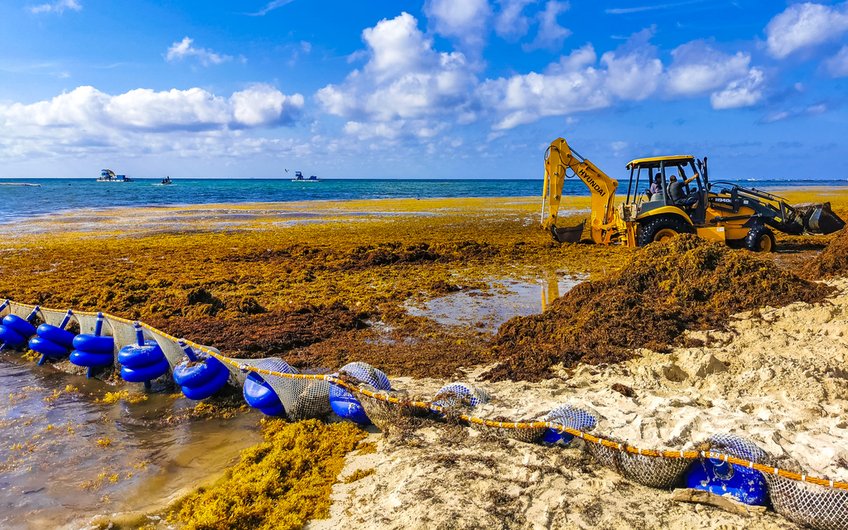
Recent research from the Max Planck Institute for Chemistry has identified the driving mechanisms behind the significant blooms of Sargassum algae in the Atlantic Ocean. These blooms have caused notable environmental and economic challenges for coastal regions, particularly in the Caribbean and the Gulf of Mexico.
By early June 2023, approximately 38 million tons of Sargassum had drifted toward the coasts of various Caribbean islands, marking an unprecedented high. These brown algae accumulate on beaches during the summer months, creating unpleasant odors as they decompose, which drives away tourists and threatens local ecosystems.
Understanding the Mechanisms Behind Algal Blooms
Historically, it was unclear what was fueling the rapid growth of Sargassum. While nutrient runoff from agriculture and deforestation had been hypothesized, these explanations failed to account for the observed increases in algal biomass over the past decade. The recent study has unveiled a more complex interaction involving phosphorus from deep ocean upwelling and nitrogen-fixing cyanobacteria.
Researchers discovered that strong winds near the equator drive nutrient-rich deep water to the surface, transporting phosphorus into the Caribbean. This influx benefits cyanobacteria that colonize Sargassum, allowing them to capture nitrogen from the atmosphere and convert it into a usable form for the algae. This symbiotic relationship provides Sargassum with a competitive edge over other marine flora.
By analyzing coral drill cores from various Caribbean locations, the research team reconstructed changes in nitrogen levels in the ocean over the past 120 years. These corals serve as valuable archives, incorporating chemical signatures from surrounding waters into their skeletons.
Implications for Coastal Communities and Ecosystems
The findings have significant implications for understanding and predicting Sargassum blooms. The study reveals that periods of increased nitrogen fixation correspond with notable Sargassum biomass increases, particularly in 2015 and 2018, years marked by record blooms. According to Jonathan Jung, a PhD student at the Max Planck Institute and lead author of the study, the correlation between nitrogen fixation rates and Sargassum growth is crucial for future predictions.
While the predominant cause of these blooms has been identified as phosphorus upwelling, other contributing factors remain uncertain. For instance, some researchers previously suggested that iron-rich dust from the Sahara might enhance Sargassum growth, but no correlation with algal biomass has been observed.
The study highlights the importance of monitoring wind patterns, sea temperatures, and nutrient upwelling in the equatorial Atlantic to improve predictions of Sargassum blooms. According to Alfredo Martínez-García, a group leader at the institute, understanding how climate change impacts these processes is essential for managing the future of Sargassum in the region.
The research aims to inform efforts to mitigate the impacts of Sargassum on coastal communities and ecosystems. As the study progresses, researchers plan to evaluate new coral records from diverse Caribbean locations to deepen their understanding of these complex interactions.
By addressing the underlying factors contributing to these algal blooms, scientists hope to provide vital insights that can help safeguard the health of coastal environments and the livelihoods dependent on them.







